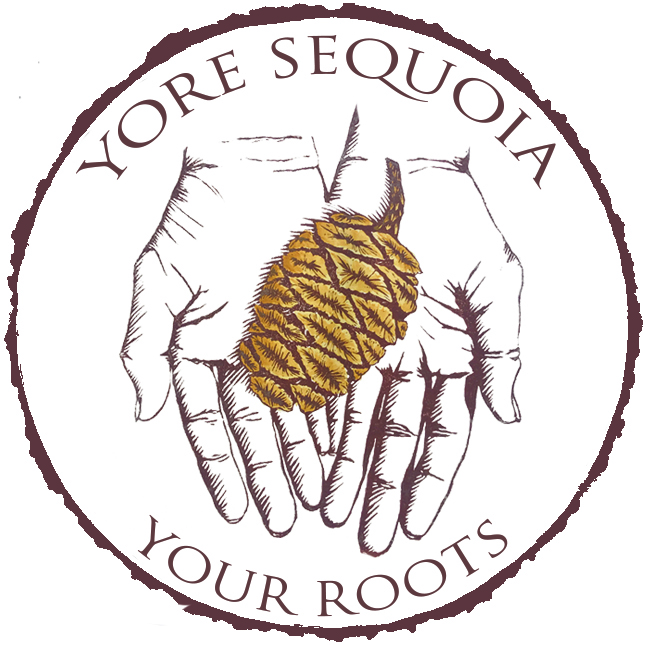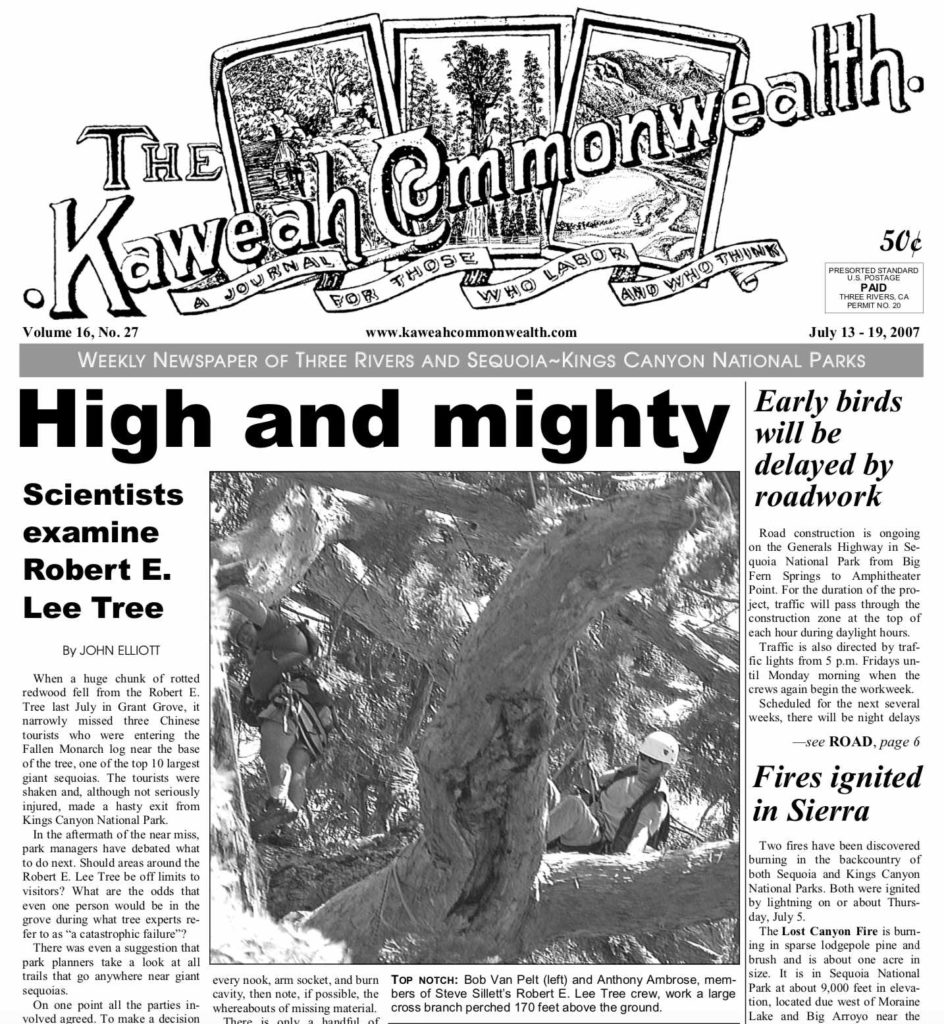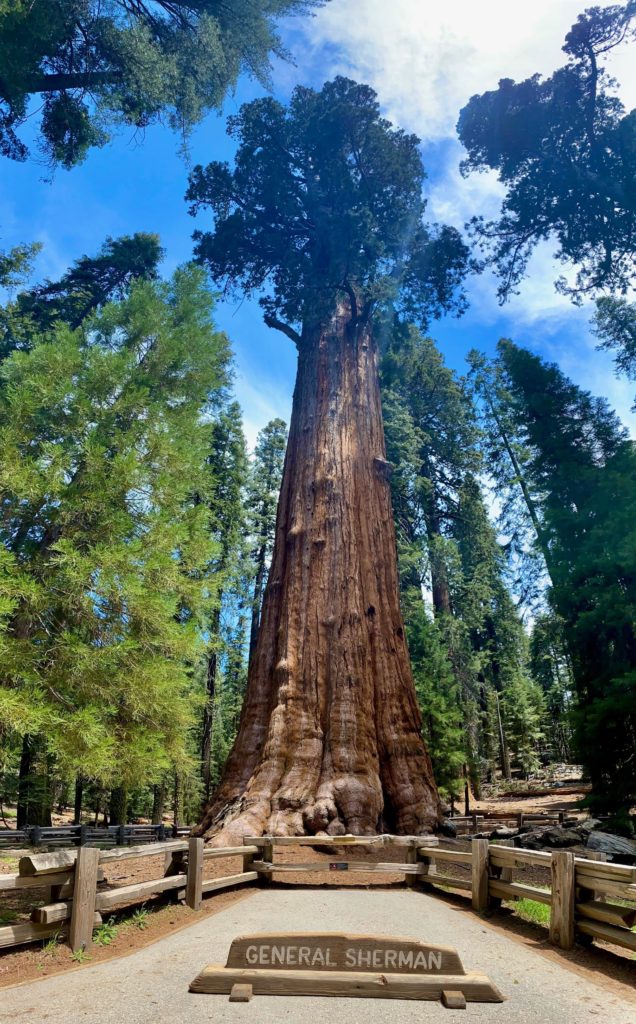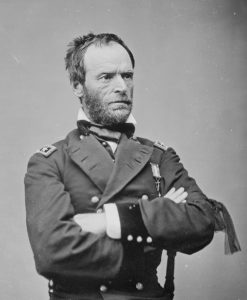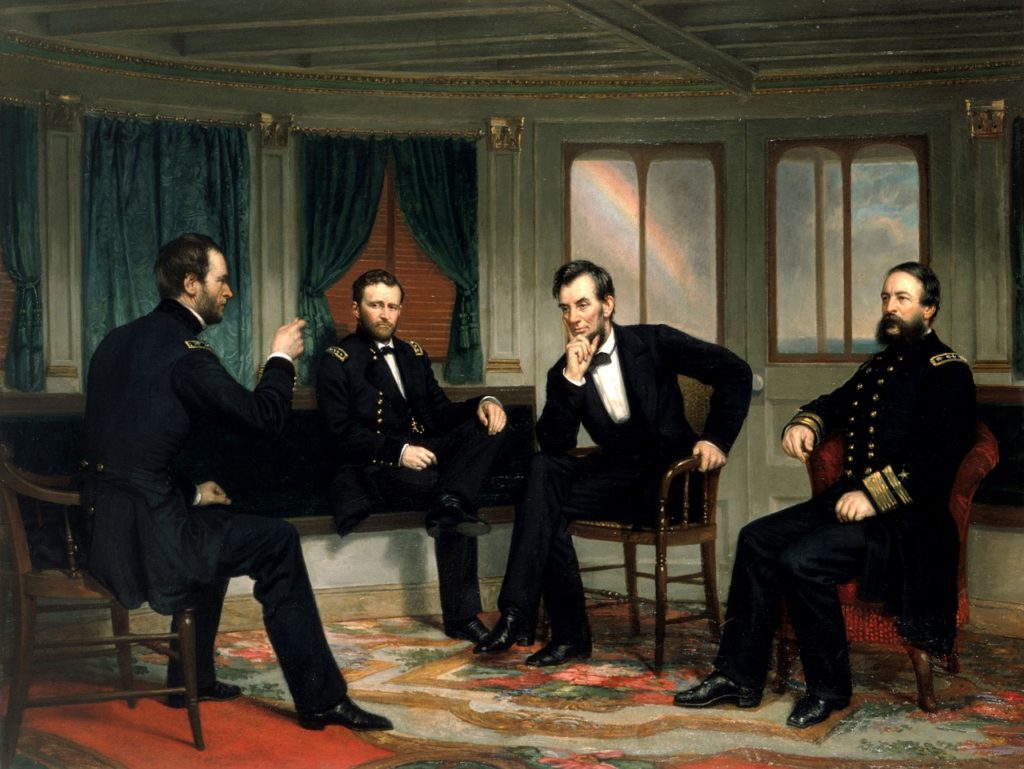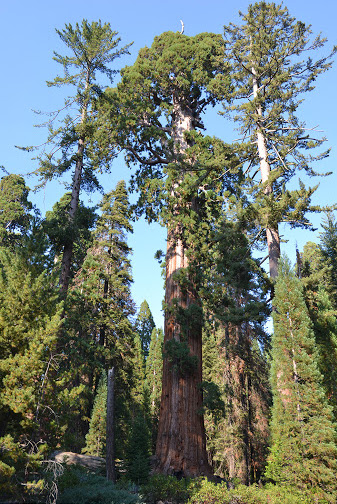
With all eyes on Confederate symbols it shouldn’t be lost on the residents of Kaweah Country that there are two living monuments within Sequoia and Kings Canyon National Parks dedicated to Confederate General Robert E. Lee
By Sarah Elliott, 25 June 2020, 3RNews

Monuments have come down throughout the nation during a worldwide wave of protests that began May 25, 2020, with the murder of George Floyd in Minneapolis, Minn., by police. Along with the recent murders of Breonna Taylor and Ahmaud Arbery, these actions have sparked demands for sweeping changes and a nationwide uprising for racial justice. There is a re-energized movement that hasn’t been experienced in the U.S. since the Civil Rights Movement of the 1960s, and activists are calling for a just and sustainable future where Black Lives Matter.
With all eyes on Confederate symbols, from its flag to statues, it shouldn’t be lost on the residents of Kaweah Country that there are two living monuments within Sequoia and Kings Canyon National Parks dedicated to Confederate General Robert E. Lee (January 19, 1807-October 12, 1870).
Robert Edward Lee, Confederate general and slave owner
Lee, who was born in Virginia, attended the United States Military Academy at West Point, where he graduated second in the class of 1829. Two years later, he married Mary Anna Randolph Custis, a descendant of George Washington’s adopted son, John Parke Custis.
Lee served 17 years as an officer in the Corps of Engineers, supervising and inspecting the construction of the nation’s coastal defenses. He first set foot on a battlefield during the 1846 war with Mexico. He quickly distinguished himself, earning three brevets for gallantry and emerging from the conflict with the rank of colonel.
From 1852 to 1855, Lee served as superintendent of West Point. In 1855, he left the academy to take a position in the Cavalry and in 1859 was called upon to stop abolitionist John Brown’s raid at Harpers Ferry.
In April 1861, as the Civil War began, Abraham Lincoln offered Lee the command of the federal forces. Lee declined and tendered his resignation from the U.S. Army when the state of Virginia seceded on April 17, arguing that he “could not fight against his own people.” Instead, he accepted a general’s commission in the newly formed Confederate Army, fighting for slavery.
In February 1865, Confederate President Jefferson Davis named Lee general-in-chief of all Confederate forces. Two months later, on April 9, 1865, Lee and his army surrendered to the Union’s General Ulysses S. Grant at the Appomattox Courthouse, effectively ending the Civil War.
Lee returned home on parole and eventually became the president of Washington College in Virginia (now known as Washington and Lee University). He remained in this position until his death in Lexington, Virginia, at the age of 63.
During the Civil War, Lee was responsible for the deaths of hundreds of thousands of Americans in defense of the South’s authority to own millions of human beings as property because they were black. And Lee was a slave master himself. In a 2017 article in The Atlantic, Lee was described as cruel and heavy handed.
Lee was especially vicious because he would separate slave families, which was a fate worse than death. In Reading the Man, the historian Elizabeth Brown Pryor creates a portrait of Lee through his writings, and said, “By 1860, he had broken up every family but one on the estate.”
A well-known story of Lee describes when two of his slaves escaped and were recaptured. Lee either beat them himself or ordered the overseer to “lay it on well.” Wesley Norris, one of the slaves who was whipped, recalled that “not satisfied with simply lacerating our naked flesh, General Lee then ordered the overseer to thoroughly wash our backs with [salt] brine, which was done.”
Lee Trees
Robert E. Lee Tree
The most famous of the two Lee trees in the local parks is the Robert E. Lee Tree in Kings Canyon National Park. Located on the trail to the General Grant Tree and adjacent to the Fallen Monarch, this Lee Tree is, at 254.7 feet in height and 40,102 cubic feet in volume (sans burn scars), the 11th largest tree on the planet. It was reportedly named in 1875 by Richard Field, a former Confederate lieutenant, five years after Lee’s death and 15 years before General Grant National Park was established (Kings Canyon’s predecessor). The Lee trees
Currently, hundreds of people walk past this tree each day without knowing that it’s named for the Confederate general or realizing it’s one of the largest trees they will ever see. The tree is in decay, sort of like its namesake’s reputation, and, in July 2006, a limb came crashing down, narrowly missing three international tourists. A year later, tree-climbing scientists entered the tree and confirmed that it was compromised by fungus and rotted material.
At that time, the National Park Service removed the ROBERT E. LEE TREE sign for the reason of safety. Without a sign designating it as a named tree, the visiting public is less likely to pause and gather under the tree for photos. Because of the recent outcry against Confederate monuments, the tree’s moniker will most likely be allowed to fade into obscurity
General Lee Tree
The other Lee Tree is in Sequoia National Park with no superlatives such as “largest” attached to it. It has a sign identifying it, but is not as noticeable as the other trees in the vicinity: President, Sequoyah, Congress Group.
“The one in Giant Forest, the General Lee Tree, still has its sign in place,” reported Sintia-Kawasaki-Yee, parks information officer. “[The Park Service is] having conversations about what the options are for that sign and what policies are involved as we’re getting asked to both remove the sign and also to leave the sign in place. I think this is going to take some public engagement, and we may not have a decision soon.”
“As far as removal of reference to Robert E. Lee, we’ve looked through our website and other materials and found one document that listed the Robert E. Lee Tree,” Sintia continued. “We’ve modified this document and updated the website. We haven’t found anything else yet, but we’re still looking.”
